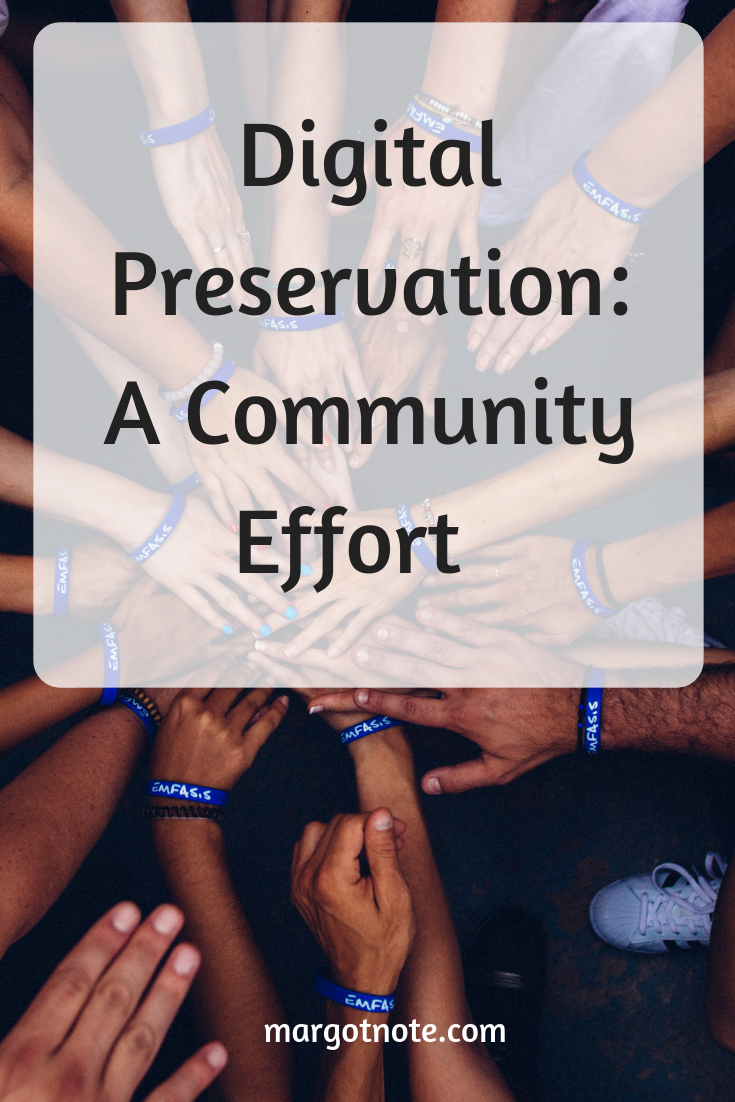Archivists have traditionally played a crucial custodial role in protecting and providing access to long-term, historical collections on paper and film, but as the volume and diversity of digital content increases exponentially over the coming decades, digital preservation has become a community effort.
Leadership at All Levels
In the archives field, some institutions lead the way in digital preservation, while others seek their guidance. Only the most well-funded institutions (primarily large universities) can afford a robust level of research and development, and they engage in collaborative efforts with other institutions to develop models and platforms with grant funding. Institutions that take a leadership role gain credibility, which pays off in terms of funding. However, even the smallest or most obscure archival repository can offer aid to the archival field regarding digital preservation techniques. As a community, we can share what best works for us locally, in hopes that others can replicate it in their home institutions.
Institution-lead Collaboration
Institutions in the United States lead projects in digital curation and preservation, because no dedicated support for these activities exists nationally, as in other countries. Well-recognized institutional collaborations include Big Ten Academic Alliance, Digital POWRR (Preserving Objects with Restricted Resources), and the Orbis Cascade Alliance.
While institutions become known for their collaborations, standards development, and outreach, even more important to success is advocacy performed within institutions. As funding opportunities evolve, engaging employees, target audiences, administrators, and donors becomes a challenge. Communication, staff involvement, and access to resources are paramount to maintaining morale in our internal community and shifting environment. Institutional sustainability is key to the sustainability of digital content.
Harnessing Group Wisdom
Archivists should make use of existing networks to share information, establish collaborations, and learn from others. Begin by learning from listservs, publications, and conferences. Then start developing your policies and procedures, testing out the best methods, and share what you learn. By sharing information, archivists can highlight how they provide access to digital materials, discuss the importance of access, and provide guidance on what solutions work in different contexts and communities. What works for one institution may not work for another, but can be adjusted to be the most meaningful to the user communities we serve.
Work with colleagues to develop best practices, which eventually turn into standards. Look to the Society of American Archivists, the Digital Library Federation, the National Digital Stewardship Alliance, the Best Practices Exchange, and the Digital Curation Centre community for leadership and innovation in this area.
Working Together as a Community
Digital preservation challenges are born of our changing culture and our responses to those challenges. Formats, software, and media evolve, and the extent to which we have been managing content across those many changes determines just how much work we still need to do. There are steps we can take together to set up safety nets that will help us move forward. For example, we can collaborate with other institutions to store copies of one another’s digital content. We can determine the best way to protect the originals while working out the best way to transform or migrate copies.
Community Learning
We can learn from one another’s explorations, research, and testing to avoid making mistakes. By working together, we improve our chances of success and the scope of valuable digital content that will survive in the future. This sense of experimentation is critical to applying the right digital preservation techniques and policies in archival repositories of all sizes. By improving preservation efforts and sharing tactics, archivists can elevate the value of their digital content, raise their institutional profiles, and ensure that archives deliver new and engaging ways in which content can be distributed, consumed, and enjoyed.
The blog was originally published on Lucidea's blog.































